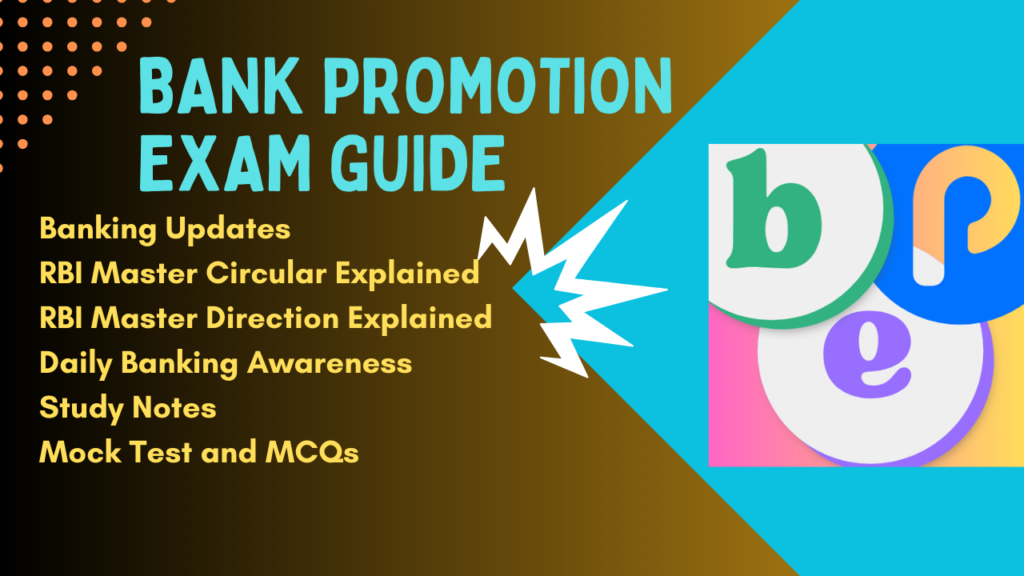Priority Sector Lending Certificates (PSLCs) explained in simple way for bank promotion exams and interviews.
Table of Contents
Purpose and Nature of Priority Sector Lending Certificates (PSLCs)
- Purpose:
- These certificates help banks to meet the targets set for lending to important sectors of our economy, i.e, Priority Sector.
- Banks that lend more than the required amount to these sectors are rewarded.
- This system encourages banks to lend more money to these important sectors.
- Nature:
- These certificates are for transferring the fulfillment of lending obligations, not the actual loans or the risks associated with those loans.
- The bank that has lent more sells the fulfillment, and the bank that needs to meet its targets buys the fulfillment.
Operational Modalities of Priority Sector Lending Certificates (PSLCs)
- Trading Platform:
- The Reserve Bank of India (RBI) uses its computer system, called e-Kuber, for trading these certificates.
- Detailed instructions are available on the e-Kuber system.
- Eligible Participants:
- The following banks can participate:
- Scheduled Commercial Banks (SCBs)
- Regional Rural Banks (RRBs)
- Local Area Banks (LABs)
- Small Finance Banks (SFBs)
- Urban Co-operative Banks
- The following banks can participate:
Types of Priority Sector Lending Certificates (PSLCs)
- PSLC Agriculture:
- This certificate represents loans given to agriculture, except for small and marginal farmers.
- It counts towards the agriculture target and the overall lending target.
- PSLC SF/MF (Small and Marginal Farmers):
- This certificate represents loans given to small and marginal farmers.
- It counts towards the sub-target for small and marginal farmers, the agriculture target, and the overall lending target.
- PSLC Micro Enterprises:
- This certificate represents loans given to small businesses.
- It counts towards the sub-target for small businesses and the overall lending target.
- PSLC General:
- This certificate represents other loans that qualify for the lending targets, excluding agriculture and small businesses.
- It counts towards the overall lending target.
Computation and Achievement of Priority Sector Lending Certificates (PSLCs)
- PSL Achievement:
- A bank’s achievement is calculated by adding the total amount of outstanding loans to the net value of the certificates it has bought or sold.
- This calculation is done separately for each sub-target.
- Issue Eligibility:
- Generally, certificates are issued against actual loans given.
- A bank can issue certificates for up to 50% of its previous year’s achievement without having actual loans.
- The bank must meet its lending target on the reporting date.
- If a bank does not meet its targets, it may have to invest money in special funds.

Key Features of Priority Sector Lending Certificates (PSLCs)
- Credit Risk:
- The risk of the loan not being repaid is not transferred with the certificate.
- Expiry:
- The certificates expire on March 31st.
- They are not valid after the reporting date.
- Settlement:
- The transactions are done through the e-Kuber system.
- Value and Fee:
- The value of the certificate is equal to the amount added or subtracted from the lending achievement.
- The fee for the certificate is determined by the market.
- Lot Size:
- The minimum transaction is Rupees 25 lakh, and transactions must be in multiples of this amount.
- Accounting:
- The fee paid is recorded as an expense.
- The fee received is recorded as miscellaneous income.
- Disclosures:
- Banks must show the categories of certificates they have bought and sold in their financial reports.
Examples and Illustrations
- Example 1:
- Bank A sells a certificate worth Rupees 100 crore to Bank B on July 15, 2016.
- Bank B adds Rupees 100 crore to its lending achievement for the reporting dates of September 30, December 31, and March 31.
- Bank A subtracts Rupees 100 crore from its lending achievement.
- The certificate expires on March 31, 2017.
- Example 2:
- Bank C buys a certificate worth Rupees 100 crore from Bank D on March 30, 2017.
- Bank D subtracts Rupees 100 crore from its lending achievement on March 31, 2017.
- Bank C adds Rupees 100 crore to its lending achievement on March 31, 2017.
- The certificate expires on March 31, 2017.
FAQs on Priority Sector Lending Certificates (PSLCs)
What is the main purpose of Priority Sector Lending Certificates (PSLCs)?
PSLCs are made to help banks fulfil the goals for lending money to important areas of our nation’s economy. These areas are called the Priority Sector.
How do PSLCs help banks that have lent more than the required amount?
If a bank has given more loans than it was asked to, it can sell these certificates to other banks. By doing this, the bank gets a type of reward (premium paid by the purchasing bank for the PSLCs. This generates fee income for the selling bank).
What is the e-Kuber system?
The e-Kuber system is a computer programme used by the Reserve Bank of India (RBI). It is used for buying and selling PSLCs.
What are the different types of Priority Sector Lending Certificates (PSLCs)?
There are four kinds: PSLC Agriculture, PSLC SF/MF (Small and Marginal Farmers), PSLC Micro Enterprises, and PSLC General.
What happens to the credit risk when a PSLC is sold?
When a certificate is sold, the risk of the loan not being paid back stays with the bank that gave the loan. It is not passed on to the bank that buys the certificate.
When do Priority Sector Lending Certificates (PSLCs) expire?
These certificates become invalid on March 31st every year.
How is the value of a PSLC determined?
The value of the certificate is the same as the amount that is added or taken away from the bank’s lending achievement.


Pingback: Priority Sector Lending [2025 updated] Quick Notes